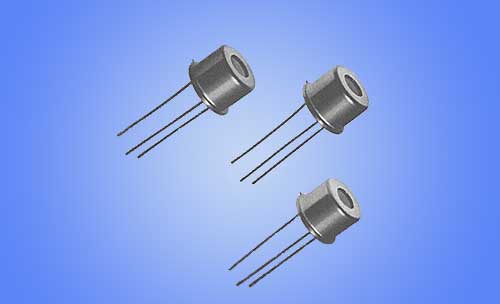


 | |
THERMOPILE DETECTORS

Thermopile detectors differ from Pyroelectric detectors in several important ways.
 | Thermopile detector output is proportional to incident radiation while the pyroelectric
detectors output is proportional to rate of change of incident radiation. In other words,
the thermopile detector is DC coupled while the pyroelectric detector is AC coupled. |
 | Thermopile detectors have low impedance while pyroelectric detectors have very high
impedance requiring an internal impedance converting buffer to make them useable. Low
impedance is an advantage in that associated circuitry is less susceptible to disturbance
from extraneous radiation and electrical noise. |
 | A thermopile is a number of thermocouples connected in series. A thermocouple is a
junction of dissimilar metals which produce voltage when one side of the junction has a
different temperature to the other. The so called cold side of the junction is kept close
to ambient temperature by bonding it to a temperature stable mass. The hot side of the
junction is exposed to incident radiation. Connecting many thermocouples in series
produces higher voltage. |
 | Some thermopile sensors have a built-in thermistor which provides measurement of the
ambient temperature thus allowing the temperature of the target to be calculated. |

|
 FUJI &
CO.(Piezo Science)
FUJI &
CO.(Piezo Science)